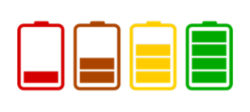The Definitive Guide For K-12 Classroom Device Deployment
Chapter 3: Choosing Devices and Deployment Plan
Create a Research and Development Team
When creating your R&D team, remember to diversify from technology to instructional to district to building employees. It is imperative to gather multiple perspectives while keeping your vision.
This team will be responsible for researching and staying current on digital devices and programs. It is important to keep in mind your context – what will work for your students, and be open to pushing the envelope. Be prepared to have small pilot groups test devices and programs to support your vision.
Choosing the right device for the Vision of Learning
There are a lot of devices to choose from today – everything from hand held tablets to chromebooks to laptops and desktops. In general, I have seen tablets in the primary grade-levels, chromebooks for secondary, and laptops for specialized programming for students. Staff members need devices based on their role. It is great to standardize but that may not be possible in all cases. For example, the art and music teachers use Apple products for design, but the district may purchase Windows laptops for all staff. There are ways around this, but it may just be easier to outfit those teachers with the right technology. Your R & D team will be critical decision-makers in this process.
To lease or not to lease
It is important to build a sustainable budget for your digital implementation plan. Once you go 1:1, you can never go back. Leasing is one way to secure the promise of secured funding over time. Your payments are consistent and are not based on a hopeful grant or one-time source.
Device Set-up
Depending on your classroom plan, you will want to set up your devices as personal or shared devices. Many times, district will want to standardize devices for two reasons:
1. Ease of deployment, management, and support
2. Teacher and student training
I get this, yet we have to keep in mind that we are not teaching robots. We are teaching learners who have variability and need different tools to be successful. So this is what I suggest:
Go ahead and set up a standard device shell and duplicate that standard set-up for all devices. Done. THEN, let teachers and students choose how they personalize their device from a pool of apps/programs that will allow each student to leverage the device for their particular needs.
Ordering
Many districts order at least 10% more devices than their student population. This will ensure if a device is unusable, the student can have a “hot swap” or loaner until the device is back in working order. It is important to have policies/procedures around swapping devices.
Refresh Plan
 Your devices will have a life of 3-4 years. This is due to wear and tear, as well as operating system updates. In order to achieve your vision/learning goals, it is important that all devices are functioning at optimal efficiency. If you choose to lease, you will automatically have a refresh cycle built in. If you purchase, plan for exiting devices with students or a community resource and purchasing new every 3-4 years.
Your devices will have a life of 3-4 years. This is due to wear and tear, as well as operating system updates. In order to achieve your vision/learning goals, it is important that all devices are functioning at optimal efficiency. If you choose to lease, you will automatically have a refresh cycle built in. If you purchase, plan for exiting devices with students or a community resource and purchasing new every 3-4 years.
Considerations
When purchasing devices for a 1:1 deployment, you may want to consider:
1. What management device manager (MDM) will support all devices? How will you enroll all of the devices?
2. What services will you procure to repair damaged devices (warranty, paid services)?
3. What software, apps, security programs will need to be loaded/pushed to all devices?
4. What resource managing program will you use to track devices?
5. How will you ensure privacy and security of student data?
6. What firewall security will ensure safe internet searching?
7. Will you consider device classroom management software?
8. What systems of charging will you employ?
 Human Capital
Human Capital
When deploying devices, you may need to consider your human power. Who will be:
1. Unboxing
2. Enrolling in the MDM
3. Loading apps, software, etc.
4. Asset tagging
5. Packing for each school/classroom
6. Organizing for distribution in school
7. Labeling each device with student name/classroom
8. Organize storage, charging, management
in classrooms
9. Checking out device to each student
10. Managing a repair/damage center
